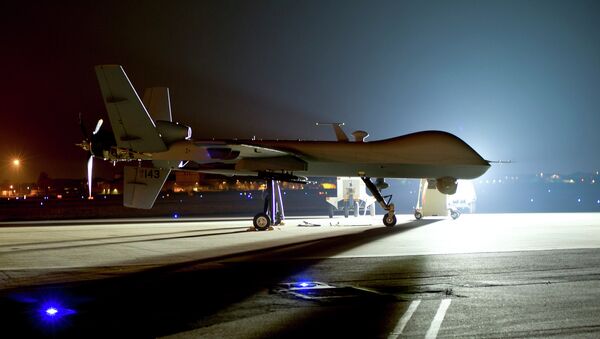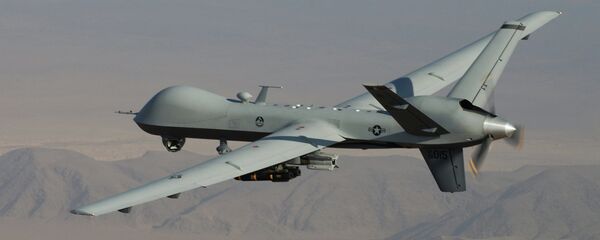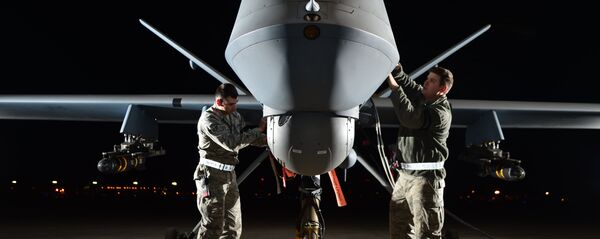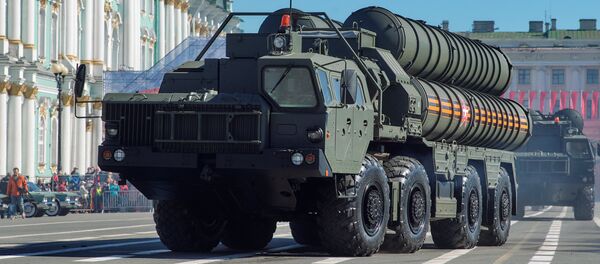Construction was recently completed on facilities such as processing centers, aircraft maintenance, communications and living quarters to support and house the detachment, which is technically part of the 52nd Fighter Wing, the rest of which is based at at Spangdahlem Air Base in Germany.
"In addition to the completion of these projects, another important change is the remotely piloted aircraft here are now operated by both contractors and US military personnel," US Air Force Brig. Gen. Greg Semmel said at the opening ceremony, according to the release. "This flexibility allows for the addition of new missions, and having US military personnel expands the variety of missions we can accomplish."
"They all welcomed us into the community; they welcomed us into their restaurants, into their shops and into their homes," said US Air Force Col. Andrew Eiler, the group's commander. "We were neighbors, but became friends and family. I am very proud of the partnership and the capability that we've built."
Built by General Atomics, the MQ-9 is the successor to the MQ-1 Predator as the US Air Force's bread-and-butter vehicle for remotely piloted operations. As it was originally conceived as a recon vehicle, the Predator was only capable of carrying light weaponry following modification. However, the Reaper is larger, heavier and faster, capable of packing 15 times the amount of ordinance as the Predator, according to a USAF fact sheet.
Military.com notes the deployment of Reapers to Poland is part of the North Atlantic Treaty Organization's growing shift toward confrontation with Russia in Eastern Europe — not in the least because the alliance's objections to Russian influence in the region follow those of the Ukrainian government toward Crimea and the Donbas, but also due to the Pentagon's changing strategic orientation worldwide toward great power confrontation with Russia and China.
However, rather than Washington using the MQ-9s for air strikes, as it has in other conflicts like Pakistan and Yemen, it seems the drones will be mostly restricted to their ISR roles in the region.
"Drones may be vulnerable to Russian-supplied [anti-aircraft artillery] and [surface-to-air missiles], so it may not be prudent to commit them against the rebels or to escalate an already tense situation," a retired US Air Force Reaper pilot told the Air Force Times. "We currently operate in arenas where we have total air supremacy. That's something we would not have in eastern Ukraine."
US Army Gen. Curtis Scaparrotti, the Supreme Allied Commander Europe of NATO Allied Command Operations, told the US Senate Armed Services Committee on Tuesday that "I need… more ISR" in Eastern Europe.
"[My final] concern is my intelligence, surveillance and reconnaissance capacity, given that increasing and growing threat of Russia," he said.
However, the commander warned lawmakers of the dangers of Washington stepping away from the Intermediate-Range Nuclear Forces Treaty, as US President Donald Trump did on February 1, triggering a six-month countdown to the agreement's total dissolution.
"I don't know that we have a plan today," Scaparrotti said, according to the Washington Post.
"From my point of view, when you have a peer competitor, and particularly a modernizing one that will be challenging you, such as Russia, we should look toward treaty capabilities in order to provide some stability, to provide signals and communications and limits that we understand and that we can work from," he said.
Sputnik reported last May that MQ-9s had begun operating out of the Air Force's Larissa Air Base in Greece, performing much the same ISR ops across Africa as are now being run out of Poland.
The Polish government has gone to great lengths to develop larger defense ties with Washington over the past year, including offering $2 billion toward a permanent US military base in the country, Sputnik reported.





